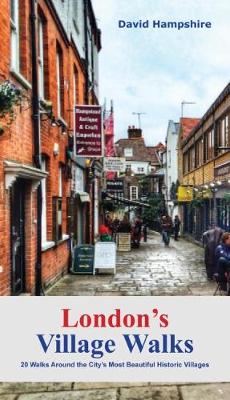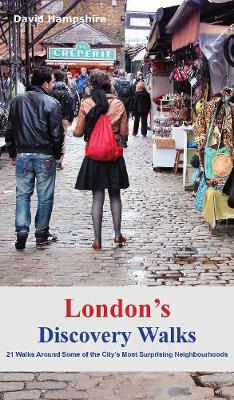London Walks
3 total works
London is a vast metropolis with a population of over 8.5 million people and a history stretching back two millennia. However, unlike more modern cities, London was never planned as a major city but has grown over the centuries to absorb numerous historic towns and villages. Many of these...Read more
London is a vast metropolis with a population of over 8.5 million people and a history stretching back two millennia. However, unlike more modern cities, London was never planned as a major city but has grown over the centuries to absorb numerous historic towns and villages. Many of these are now bustling cosmopolitan areas such as Bloomsbury and Notting Hill, while others, such as Barnes and Dulwich, are more rural and retain their original charm and character. It's hard to imagine nowadays, but in the 18th and 19th centuries, people were farming in Islington and fishing in Chiswick!
Nevertheless, if you're seeking a village vibe - a village green, small local shops, an ancient church and graveyard, even a pond beside a pub - you can still find them in London if you know where to look. Modern London is made up of a rich tapestry of ancient villages, just waiting to be discovered.
London's Village Walks takes you around 20 of the city's most interesting and best preserved villages, where - with a little imagination - it's possible to imagine you're still living in a bygone age.
Nevertheless, if you're seeking a village vibe - a village green, small local shops, an ancient church and graveyard, even a pond beside a pub - you can still find them in London if you know where to look. Modern London is made up of a rich tapestry of ancient villages, just waiting to be discovered.
London's Village Walks takes you around 20 of the city's most interesting and best preserved villages, where - with a little imagination - it's possible to imagine you're still living in a bygone age.
Many people are familiar with London's River Thames, but the city has much more to offer when it comes to waterways, including a wealth of canals, minor rivers (most are tributaries of the Thames), lakes and reservoirs that offer tranquil and beautiful walks. Many waterways have dedicated walking and...Read more
Many people are familiar with London's River Thames, but the city has much more to offer when it comes to waterways, including a wealth of canals, minor rivers (most are tributaries of the Thames), lakes and reservoirs that offer tranquil and beautiful walks. Many waterways have dedicated walking and cycling paths alongside them, notably the Thames Path which follows the entire course of the river, and London's canals, where the former towpaths along which horses towed the canal boats are now reserved for walkers and cyclists. London's minor rivers - secret waterways - are not always so easy to follow, as they wend their way along streets, through parks and even underground, but are a wonderful way to get off the beaten track and commune with nature. Most walks are between 3 and 7 miles in length, with the average around 41/2 miles. However, it's best to allow a half day for the shorter walks and as much as a full day for the longer walks - particularly if you plan to partake of the many excellent pubs, restaurants and caf s along the routes (for your author, a good lunch is a prerequisite of a good walk) - not to mention the many diversions along the way, such as museums, galleries and churches. Our aim was to take the 'scenic route', visiting as many interesting landmarks as possible, rather than simply getting from A to B. Writing London's Waterside Walks has been a fascinating, edifying and enjoyable adventure. We hope that you enjoy these walks as much as we did; all you need is a comfortable pair of shoes, a sense of adventure - and this book!


